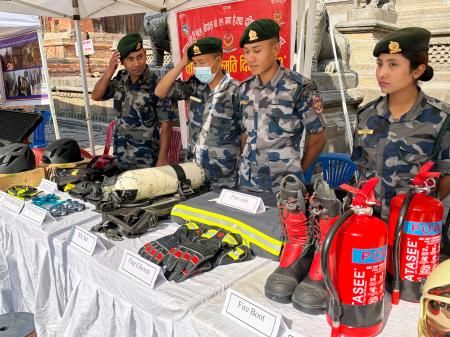Nepal: Disaster Preparedness Ten Years After the 2015 Earthquake – A Decade of Progress and Persistent Challenges
Ten years after the devastating 2015 Gorkha earthquake that shook Nepal, leaving a trail of destruction and claiming thousands of lives, the nation stands at a crossroads. While significant strides have been made in disaster preparedness and resilience, persistent challenges remain, highlighting the ongoing need for robust and sustainable strategies. This article explores Nepal's journey in disaster preparedness a decade after the earthquake, examining both the achievements and the areas requiring further attention.
The Scars Remain: Remembering the 2015 Earthquake
The 7.8 magnitude earthquake on April 25, 2015, and its subsequent aftershocks, caused widespread devastation across Nepal. The UNESCO World Heritage sites of Kathmandu Valley suffered significant damage, and countless homes were reduced to rubble. The death toll exceeded 9,000, with many more injured and displaced. The disaster highlighted the critical need for improved infrastructure, building codes, and effective disaster response mechanisms.
Key Impacts of the 2015 Earthquake:
- Massive loss of life and displacement: Thousands perished, and hundreds of thousands were left homeless.
- Widespread infrastructure damage: Homes, schools, hospitals, and cultural heritage sites were severely impacted.
- Economic disruption: The earthquake severely hampered Nepal's already fragile economy.
- Increased vulnerability: Existing inequalities were exacerbated, leaving marginalized communities particularly vulnerable.
A Decade of Progress: Strengthening Disaster Preparedness
In the aftermath of the 2015 earthquake, Nepal embarked on a significant journey to improve its disaster preparedness capabilities. The government, along with national and international organizations, implemented various initiatives focused on:
Improved Building Codes and Construction Practices:
- Revised building codes: Nepal has updated its building codes to incorporate seismic resilience, aiming to ensure new constructions are more earthquake-resistant.
- Training programs for construction workers: Initiatives focus on training builders and engineers in earthquake-resistant construction techniques.
- Retrofitting existing structures: Efforts are underway to retrofit older buildings to enhance their resilience to future earthquakes.
Enhanced Early Warning Systems and Disaster Response Mechanisms:
- Investment in early warning systems: Nepal has invested in early warning systems, including seismic monitoring networks and public alert systems.
- Improved coordination among agencies: Efforts are underway to enhance coordination among government agencies, NGOs, and international organizations involved in disaster response.
- Community-based disaster preparedness: Training and awareness programs at the community level aim to empower people to respond effectively during emergencies.
Focus on Risk Reduction and Community Resilience:
- Land-use planning and zoning regulations: Efforts are being made to incorporate risk considerations into land-use planning to minimize vulnerability in high-risk areas.
- Disaster risk reduction education: Schools and communities are receiving training on disaster preparedness and risk mitigation.
- Strengthening social safety nets: Measures are being taken to enhance social safety nets to support vulnerable populations in the aftermath of disasters.
Challenges Remain: The Path Forward
Despite significant progress, Nepal continues to face considerable challenges in its disaster preparedness efforts:
- Implementation gaps: Challenges remain in enforcing updated building codes and ensuring widespread adoption of earthquake-resistant construction practices.
- Funding constraints: Securing adequate and sustained funding for disaster preparedness initiatives remains a critical challenge.
- Capacity building: Continued investment in capacity building for local communities and government agencies is crucial.
- Climate change impacts: Nepal is highly vulnerable to the impacts of climate change, including increased frequency and intensity of extreme weather events, further complicating disaster preparedness efforts.
Conclusion: Building a More Resilient Nepal
Nepal's journey in disaster preparedness over the past decade demonstrates a significant commitment to building a more resilient nation. However, sustained efforts are needed to address the remaining challenges and ensure that the lessons learned from the 2015 earthquake are fully integrated into long-term strategies. Continuous investment in infrastructure, early warning systems, community engagement, and capacity building will be crucial to safeguarding Nepal's future and mitigating the devastating impacts of future disasters.
Further Reading:
- [Link to a relevant government website on disaster preparedness in Nepal]
- [Link to a report from an international organization on Nepal's disaster risk reduction efforts]
Call to Action: Learn more about how you can support Nepal's disaster preparedness efforts. Consider donating to reputable organizations working on the ground or advocating for policies that promote resilience.
